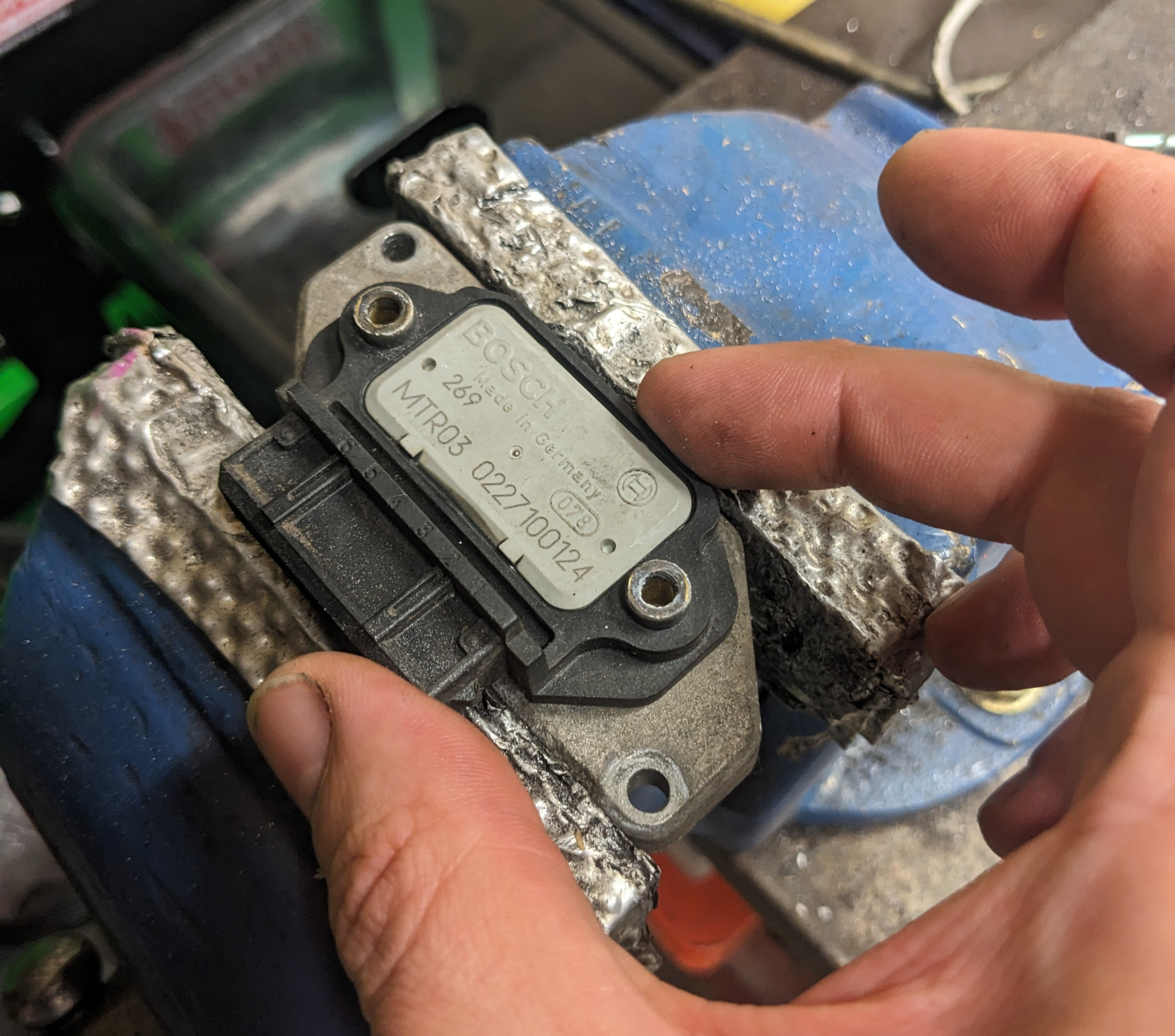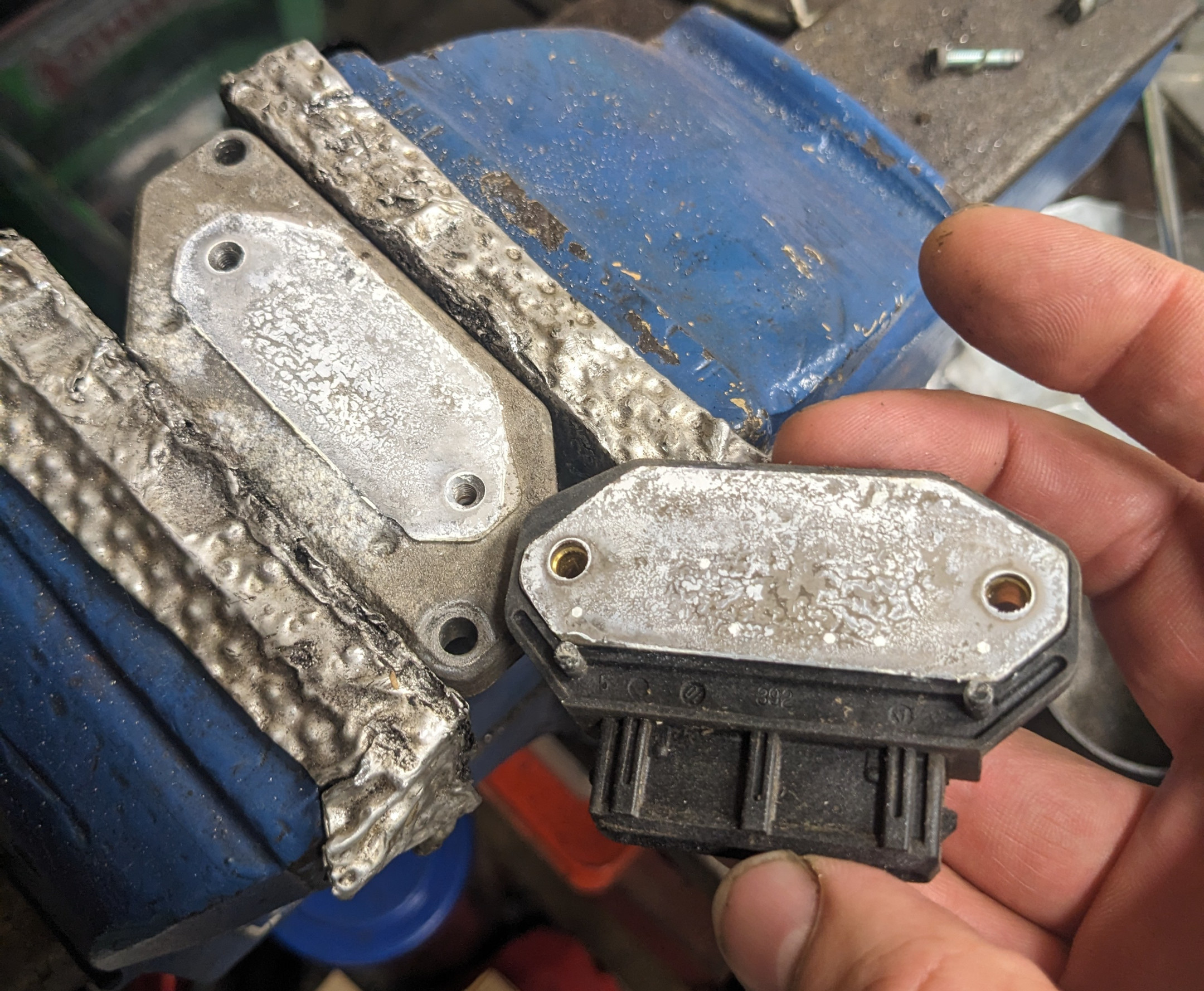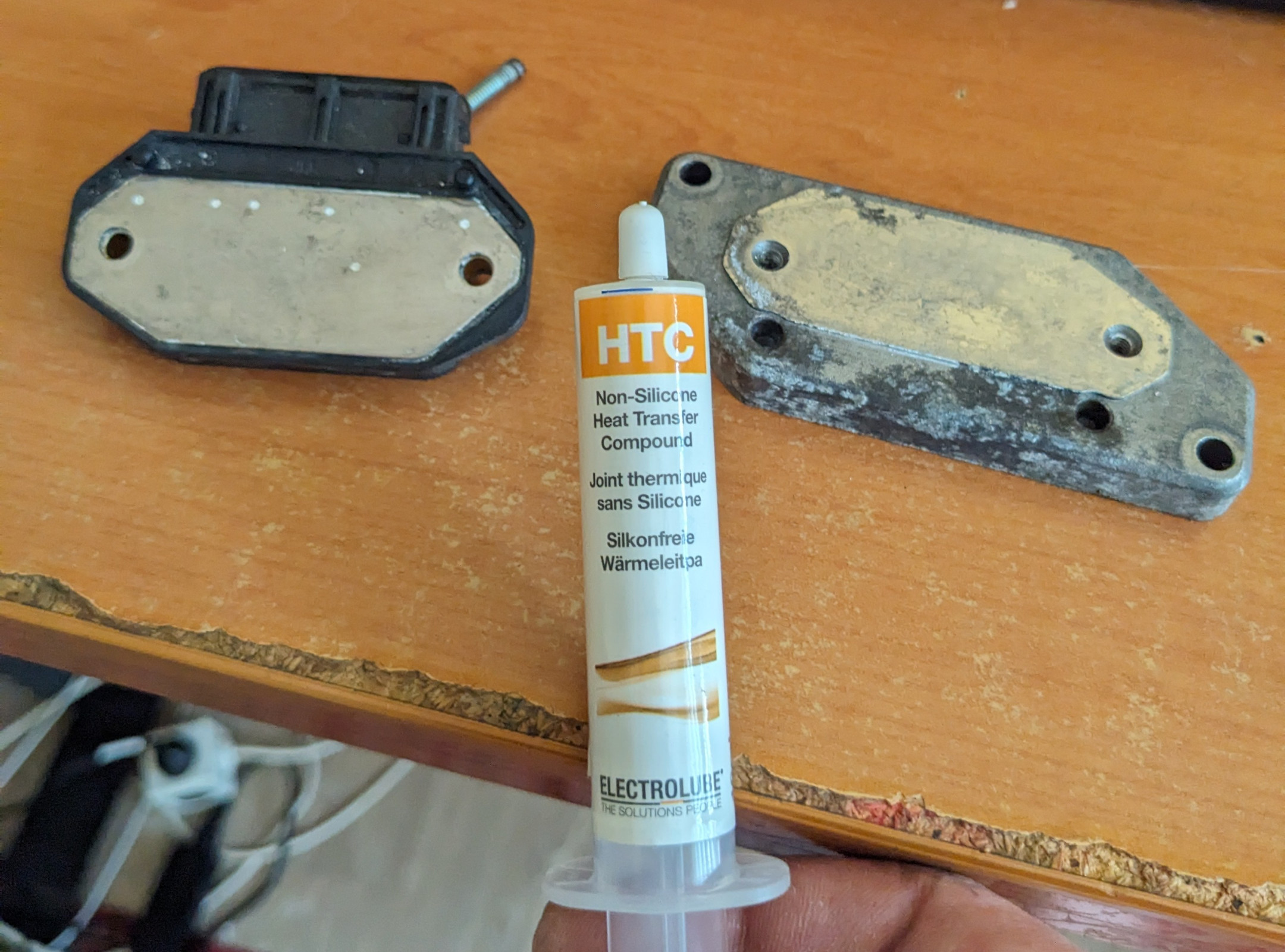Ignition amplifiers generally fail because the electronics get overheated. This happens because the thermally conductive paste that sits between the module and its heatsink dries out over time and breaks down, reducing its effectiveness.

Ignition amplifiers are relatively expensive to replace, so replacing the thermal compound is a very cost-effective way to extend the lifespan of your module.
It's also really easy!
- Remove the module from the car with its heatsink. In a 240, you will find it on the inner guard, just behind the headlight and next to the battery. In 740s and 940s it is in a similar location.
- Remove the screws holding the module to its heatsink. If the two halves separate with zero resistance, the thermal compound is cooked.

- Wipe away all the compound. Use isopropyl, a toothbrush, and a razor blade, to clean both surfaces. It is very important that the surfaces are clean and smooth. Run the razor blade lightly across both surfaces, removing any compound or burrs that it catches.

- Next, apply about a pea sized amount of thermal paste to the heatsink and spread it out evenly over the entire mating surface.
- Finally, re-attach the ignition amplifier to the heatsink, wipe away any excess compound, then fasten screws and re-install in the engine bay.
I used HTC Electrolube (0.9W/mK), but there are cheaper compounds that will work fine also. If you have recently built yourself a PC and bought thermal compound to attach the CPU heatsink, that should be fine in this application also.